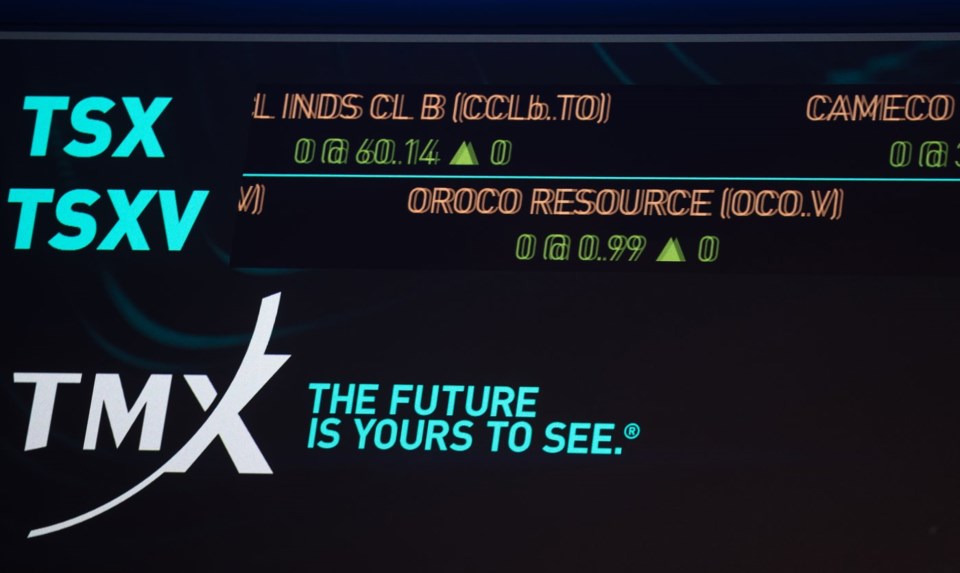Energy equities nudged up Canada’s main stock index on Tuesday, balancing out a slight drop in the technology and industrial sectors.
The S&P/TSX composite index closed up 23.42 points at 21,611.30.
In New York, the Dow Jones industrial average was up 56.76 points at 38,834.86. The S&P 500 index was up 13.80 points at 5,487.03, while the Nasdaq composite stayed virtually flat with a 5.21-point increase to 17,862.23.
Indexes were content to “tread some water” ahead of Wednesday's Juneteenth federal holiday in the U.S., said Craig Fehr, head of investment strategy for Edward Jones. But the mild gains speak to an upward drift particularly evident south of the border.
“It does appear that the path of least resistance for stocks at the moment remains higher,” he said. “The broad backdrop that has powered this market higher so far this year — more so in the S&P 500 than the TSX — in general remains intact.”
Nasdaq-listed Nvidia, the maker of computer chips that can power AI, passed Microsoft to become the most valuable U.S. company at over $3 trillion.
The S&P 500 and Nasdaq both hit record closing highs on Tuesday, continuing a trend they kicked off near the start of the year. The former is up about 15 per cent since Jan. 1, the Nasdaq about 19 per cent. The S&P/TSX composite has climbed less than four per cent year to date.
The bond market played host to more action than all three on Tuesday, in Fehr's view. U.S. Treasury yields declined after May retail sales figures from the Commerce Department notched an underwhelming 0.1 per cent increase that fell well below expectations, hinting at a slowdown in consumer spending.
However, the softer demand may ease pressure on consumer prices, “which allows the Bank of Canada to continue on with rate cuts and allows the (U.S. Federal Reserve) to potentially execute its first rate cut this year,” Fehr said.
The relative torpor of Canadian stocks this week — and this year — stems in part from its small slice of the global tech market.
“The majority of the leadership in the equity market is coming from technology, and obviously the TSX has an extremely small weight to technology compared to something like the S&P 500,” Fehr said.
“We've seen a little bit of weakness more recently as well in cyclical areas like energy and financials, which is where the TSX is more heavily weighted.”
Energy enjoyed a jump on Tuesday, however. The August crude oil contract was up 99 cents at US$80.71 per barrel.
“The lift in energy is really tied to the fact that oil prices did get a bit of a bid today,” Fehr said.
Tech stock declines put a drag on that lift after a strong run over the past month. Technology stocks on the S&P 500 are up by double digits in that period, far ahead of other sectors.
“That level of leadership should be expected to come along with a breather or a pit stop every so often," he said.
The Canadian dollar traded for 72.87 cents US compared with 72.76 cents US on Monday.
The July natural gas contract was up 12 cents at US$2.91 per mmBTU.
The August gold contract was up US$17.90 at US$2,346.90 an ounce and the July copper contract was up four cents at US$4.49 a pound.
This report by The Canadian Press was first published June 18, 2024.
Companies in this story: (TSX:GSPTSE, TSX:CADUSD)
Christopher Reynolds, The Canadian Press




